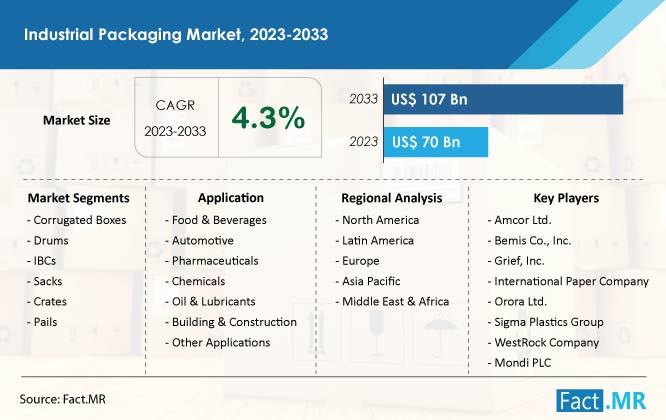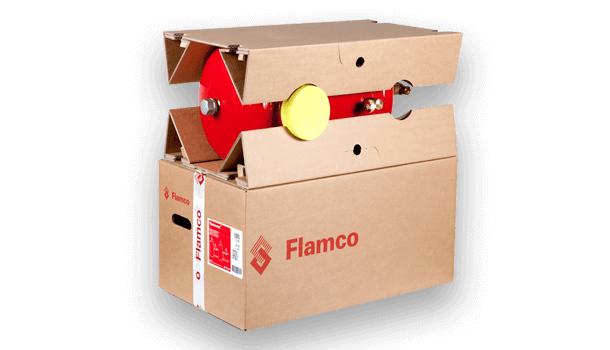Eco-Friendly Practices: Driving Adjustment with Bulk Container Recycling
Eco-Friendly Practices: Driving Adjustment with Bulk Container Recycling
Blog Article
Efficient Industrial Recycling Solutions for Sustainable Packaging: A Comprehensive Overview
In today's significantly environmentally-conscious world, the demand for sustainable packaging services has never been greater. To meet this demand, services across sectors are proactively looking for efficient commercial recycling remedies. However, navigating the complex landscape of sustainable packaging can be testing without a comprehensive guide. That's where this thorough overview on reliable commercial recycling options for lasting packaging is available in. By checking out crucial locations such as packaging material selection, designing for recyclability, implementing recycling framework, collaborating with recycling companions, and monitoring and determining recycling success, this guide will equip you with the expertise and devices needed to make educated decisions and drive positive change within your organization. Whether you're a packaging professional, sustainability manager, or merely curious about the subject, this guide will give beneficial insights and strategies to aid you browse the globe of sustainable product packaging.
Packaging Material Choice
The choice of product packaging products plays an essential role in guaranteeing the sustainability of industrial recycling services. When it involves lasting product packaging, the selection of products is type in minimizing environmental impact and taking full advantage of reusing performance. Choosing the appropriate materials can assist lower waste generation, save sources, and promote a round economic situation.
Materials like cardboard, paper, glass, and particular types of plastics can be reused several times without shedding their high quality. On the other hand, products that are difficult to reuse, such as non-recyclable composites or blended plastics, can create difficulties for the recycling procedure and might end up in land fills or incinerators.
Another factor to consider is making use of sustainable and biodegradable materials. Product packaging made from renewable energies, such as plant-based plastics or biopolymers, can aid reduce reliance on fossil gas and reduce environment adjustment. Additionally, naturally degradable products break down naturally with time, decreasing the buildup of waste in landfills.
Moreover, the weight and quantity of packaging products need to be minimized to lower transportation prices and power usage. Lightweight products not only need less sources during production however likewise add to decrease carbon exhausts during transportation.
Designing for Recyclability
Packaging designers need to focus on the usage of products that are extensively accepted for reusing and have established reusing frameworks. Products such as glass, light weight aluminum, and particular kinds of plastic, like Family pet and HDPE, are frequently reused and need to be favored over products that are costly or hard to recycle.
One more critical consideration in developing for recyclability is the elimination of unneeded components or products. By reducing the variety of layers, layers, and extra components, product packaging can be made easier and easier to reuse. Additionally, developers ought to intend to decrease the usage of blended products, as they can complicate the reusing process.

Implementing Recycling Framework
Effective execution of recycling facilities is essential for the success of commercial reusing services. Without correct infrastructure in position, the recycling procedure ends up being ineffective and inefficient, preventing the overall goal of sustainable product packaging.
To apply recycling infrastructure properly, numerous key aspects require to be considered. First of all, there need to be a well-organized collection system that helps with the splitting up and collection of recyclable products. This can consist of marked recycling bins in public spaces, in addition to collaborations with waste monitoring firms for curbside pick-up and sorting.
As soon as collected, the recyclable materials need to be carried to reusing centers in a prompt fashion. This calls for reliable logistics and transport networks, ensuring that the materials reach the appropriate facilities immediately.
At the recycling facilities, progressed sorting and handling modern technologies should remain in area to separate check over here different kinds of materials efficiently. This consists of using automated arranging equipments, optical scanners, and hand-operated sorting techniques.
Furthermore, there should be a robust market demand for recycled materials. This can be achieved through collaborations with producers and markets that utilize recycled materials in their production processes. Developing a stable market for recycled products incentivizes the recycling market and promotes the round economic climate.
Working Together With Recycling Partners

One trick element of working together with recycling companions is the establishment of clear interaction networks. It is necessary to establish open lines of interaction to assist in the exchange of information, updates, and responses. find This enables both parties to remain notified about the progression of recycling campaigns and attend to any obstacles or problems that may emerge.
Furthermore, collaboration can include collaborations in implementing and creating recycling programs. Reusing partners can supply valuable understandings and guidance in establishing efficient collection systems and establishing the most ideal recycling innovations. By collaborating, businesses and reusing companions can optimize the reusing process and decrease waste.
Furthermore, cooperation can extend beyond the functional aspects of reusing. It can likewise incorporate campaigning for and education initiatives. By signing up with pressures, businesses and recycling partners can elevate awareness regarding the importance of recycling and promote the fostering of sustainable product packaging practices among consumers and various other stakeholders.
Tracking and Measuring Recycling Success
To make sure the efficiency of commercial reusing remedies and the achievement of lasting product packaging goals, it is critical for businesses and their reusing partners to establish a thorough system for tracking and measuring recycling success (bulk container recycling). Tracking and gauging reusing success permits businesses to evaluate the effect of their recycling efforts, identify areas for renovation, and established purposeful targets for future progress
One means to track recycling success is through the usage of information collection and analysis tools. By collecting information on browse around these guys the quantity of packaging waste generated, the percent of waste that is reused, and the kinds of products being recycled, companies can obtain useful insights right into their reusing efficiency. This information can then be assessed to identify fads, patterns, and areas of ineffectiveness.
One more important element of monitoring and determining reusing success is developing standard and clear metrics. This allows businesses to compare their performance against industry benchmarks and track their development over time. Metrics such as reusing rates, waste diversion prices, and greenhouse gas emissions can provide a quantitative action of a company's recycling success.

Verdict
Finally, executing efficient industrial recycling services for lasting product packaging needs cautious consideration of packaging product selection, developing for recyclability, applying recycling framework, working together with recycling partners, and tracking and gauging reusing success. By including these techniques, services can contribute to an extra lasting and environmentally-friendly approach to packaging, decreasing waste and promoting the circular economic situation.
By checking out crucial locations such as product packaging product selection, designing for recyclability, carrying out recycling framework, teaming up with reusing partners, and monitoring and gauging reusing success, this guide will furnish you with the expertise and devices essential to make enlightened decisions and drive positive adjustment within your company. Packaging designers should prioritize the usage of products that are commonly accepted for reusing and have actually developed reusing facilities.Cooperation with recycling companions is vital for the effective application of commercial reusing solutions and the achievement of sustainable product packaging objectives. By signing up with pressures, organizations and recycling partners can increase understanding regarding the significance of recycling and promote the fostering of lasting product packaging practices amongst consumers and various other stakeholders.
By gathering data on the quantity of product packaging waste created, the percent of waste that is recycled, and the types of products being reused, organizations can get useful insights into their reusing performance.
Report this page